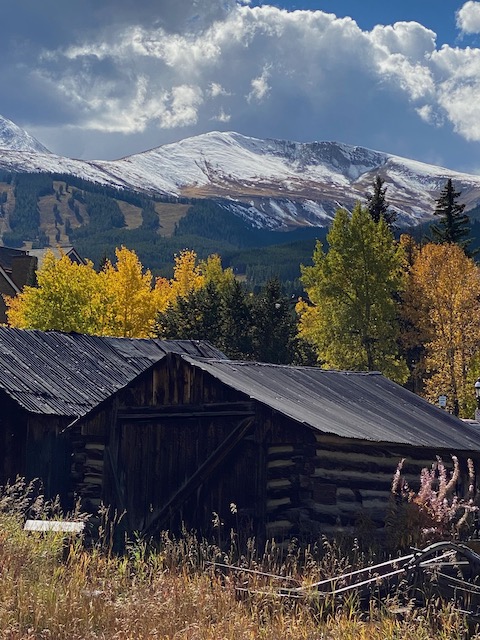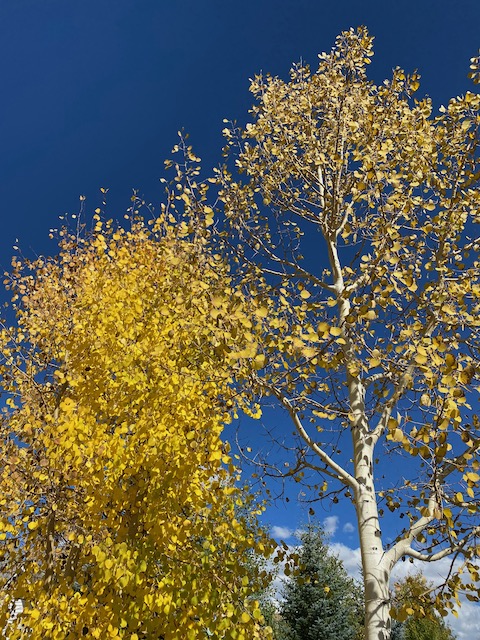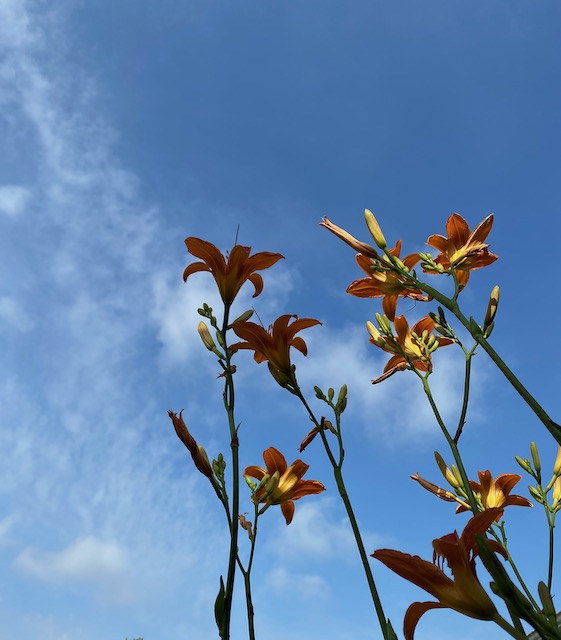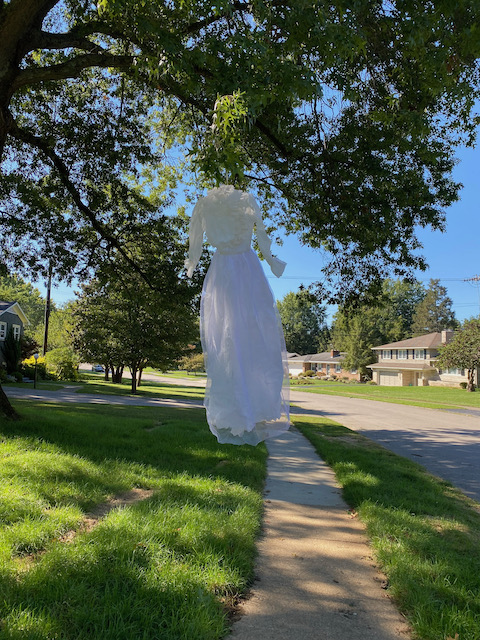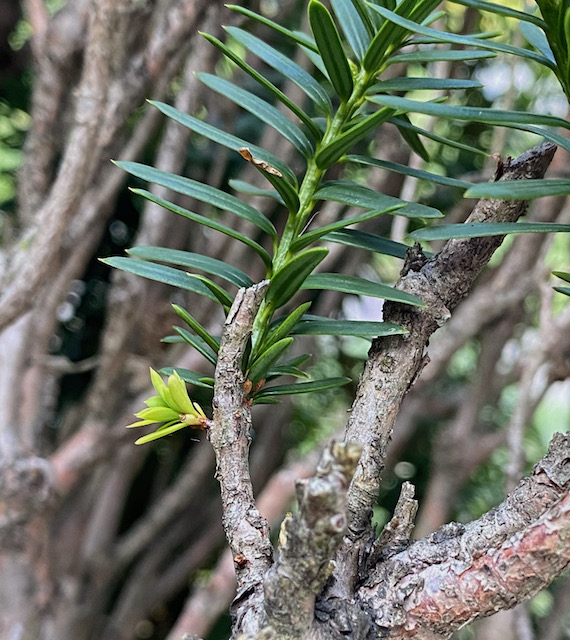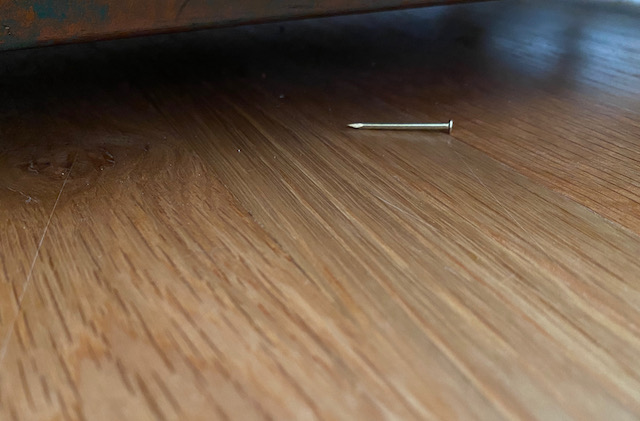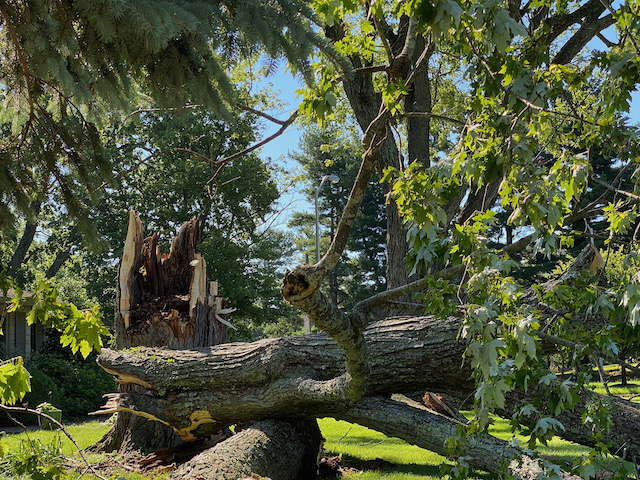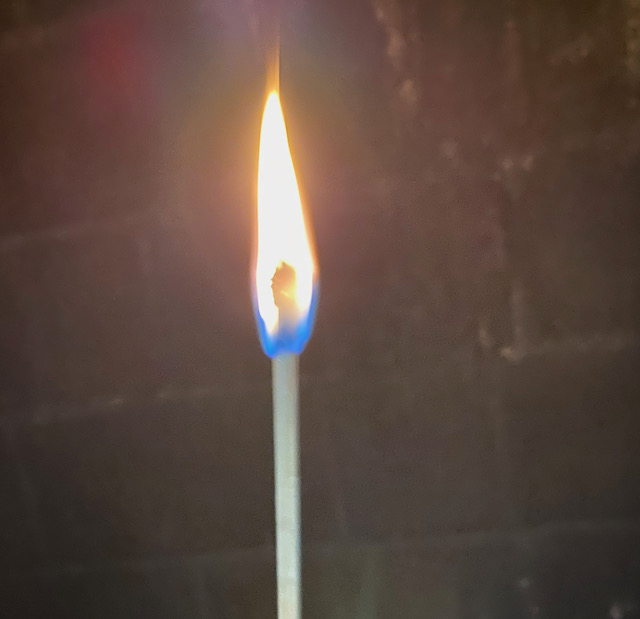This fall I visited Denver and the iconic Rocky Mountains for the first time. I knew to anticipate a difference from the familiar green rolling ridges and limestone cliffs of the Appalachians. But the mind’s expectations hardly prepare body and soul for the encounter.
Depending on weather conditions, the mountains are a now-you-see-it-now-you-don’t backdrop beyond the Denver skyline. The changeable visibility might offer a view of distant snow-capped mountains, or the entire range can be obscured by clouds and smog. We were fortunate to have a clear day heading west out of the city on I70.
Even the foothills are jagged and rough, desolate brown on some slopes and filled with evergreens on others. My ears popped as we drove up the steep inclines into the mountains.
White-barked trees with golden leaves began to appear. They glowed as if lit from within, growing in clusters. Aspens. They’re all connected, I learned. Each sends out roots that can grow into new saplings. These were families of trees.
What a gift to see the aspens in their October glory. From a distance, they make threads of light among the dark firs on the mountainsides. The bright lines and pockets of color are like the Japanese art of kitsugi, repairing cracked pottery with liquid gold—brightening, elevating, and making unique the piece that has been broken.
Up close, the aspens shimmer in the breeze with a gathering, rising sound like tumbling water or the sudden flight of a tree full of birds. The leaves are golden coins winking in the sunlight, like the glittering disks of a thousand jeweled belly dancers, held aloft on slender white branches.
There were valleys filled with these trees, like huge golden pools surrounded by mountainsides of deep green. We passed the exit to Golden, Colorado, named for this exquisite swath of color. I no longer think only of beer when I hear that name.
Seeing the aspens comes at a price for an unacclimated lowlander. The body’s strength drains out like water at 11,000 feet. The low ache of a brain in need of oxygen, the effortful thought, the necessary slow pace of movement, the fluttering heart, all mark how it feels to move through these heights.
Physical energy and mental agility grow cloudy in the high mountains, at least in the short time when I was there. I didn’t so much claim an experience as submit to it. It was an encounter: with power, with beauty, with vastness, and even with desolation. We watched a storm gather on the side of a mountain, and found ourselves peppered with snow-encased hailstones on a mountain pass. Temperatures dropped, the sun came and went. A huge ranch spread over a barren-looking plateau seemed to me an image of loneliness. I can still see the woman in boots and jeans unlatching a wide metal gate, the driver’s door of her pickup standing open—and feel her dignity and grit.
I felt the absence of how familiar terrain cushions our journey through this world. The enormity of the landscape jarred me awake, wide-eyed, as I took in what I could. The mountains inspired awe, and demanded a gathering of one’s own strength to meet them. They evoked humility, effortlessly demonstrating that life is more than I can imagine.
I’m grateful for every part of experiencing the mountains, but it’s the aspens that make me smile. Their gorgeous, golden color amidst the rugged landscape was a kind of generosity. Their inviting shimmer was like the gift of hospitality—a gift shared by those who welcomed us into their homes at the end of the day as well. Beauty and delight touch the heart when we’re traveling unfamiliar territory.
I want to remember the power of connection that I saw in the aspens, and the impact it makes on the landscape. I want to remember that I have the chance to foster that kind of community, beauty, and hospitality in the life I live. And I want to remember how much it matters.
Susan Christerson Brown

